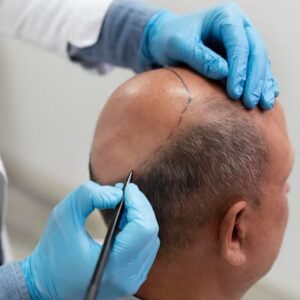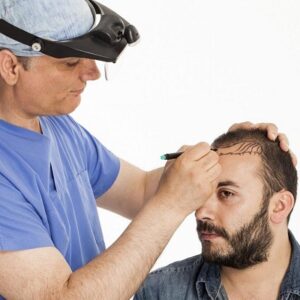
Comprising four distinct phases, hair development is an intriguing and complex process. Every cell on your head contributes to these phases, which influence everything including daily loss rate and length of them. Understanding the Hair Growth Cycle and the Four Key Stages will enable you to make wise decisions.
The Hair Growth Cycle: The Four Key Stages:
Anagen, catagen, telogen, and exogen the Hair Growth Cycle’s Four Key Stages. Different tresses on your head will be at different positions in the flow as every hair cell experiences these phases on its own, at any moment. This slow procedure helps big pieces from falling out all at once, maintaining your full natural growth and promoting consistent hair growth.
1. Anagen Phase – The Growth Stage:
The busiest period of this cycle is the anagen phase—also known as the growth stage. The cells spew new strands during this period. They grow on average half an inch per month. Here is the information on this level for you:
- Duration: Although your genes, age, and health will all affect the anagen period, it can last for two to seven years. Longer strands often result from those whose anagen periods last longer.
- Characteristic: They grow constantly during this period when the shaft cells divide rapidly. Blood veins in the head supply nutrients to them, therefore promoting longer and stronger growth.
- Percentage of Hair in This Stage: The most noticeable section of your growth cycle is about 85% to 90% of it in the anagen phase at any moment.
Eating correctly, reducing stress, and taking good care of them will all help the anagen phase last longer, stimulating quicker and better growth.
2. Catagen Phase: The Transition Stage:
The period of transformation known as the catagen phase comes when it ends. Usually, it lasts many weeks. That is the quickest phase. Here is a synopsis:
- Duration: The catagen phase, which marks the transition from active growth to rest, lasts two to three weeks.
- Characteristic: During this phase, the cells shrink, and the shaft splits from its blood source. They slow down and prepare to enter a period of rest.
- Percentage of Hair in This Stage: Only 3–5% of them are in the catagen phase at any given moment.
This brief period is rather crucial as it prepares them to shed, thereby allowing space for fresh growth.
3. Telogen Phase – The Resting Stage:
Follicles neither develop nor alter during the telogen period. They go under the moniker “resting stage,” too. This time is crucial for understanding the development and shedding patterns. The telogen phase consists of the following:
- Duration: Usually spanning two to four months, the telogen phase.
- Characteristics: They therefore stay in the shaft but do not grow. Rather, the shaft retains them in place and maintains its constant length.
- Percentage of Hair in This Stage: At this stage, around 10–15% of your roots are in the telogen phase daily.
The fall is more probable during the telogen period. This can occur regularly or be brought on by health issues, a poor diet, or anxiety. Although this loss is natural, too much might indicate an issue needing resolution.
4. Exogen Phase – The Shedding Stage:
Usually considered part of the telogen phase, they generally fall off the shaft during the exogen phase. The cycle depends on this stage to rejuvenate as it allows new cells to grow in place.
- Duration: Depending on how quickly or slowly you grow, the exogen phase may last a few days to many weeks.
- Characteristics: The strands fall out readily from the scalp during this period. Losing 50 to 100 strands a day is quite normal, and it fits a healthy development cycle.
- Percentage of Hair in This Stage: About 1% to 2% in the exogen phase at every moment.
Shedding is usual throughout the exogenic process. When the old ones fall out, the cell returns into the anagen phase, therefore initiating the growth cycle once more.
Final Thoughts:
Four different stages characterize the typical, continuous process that is hair growth. Maintaining them in good condition depends on each stage, so they are really vital. Understanding what it is will enable you to make decisions that will enable your hair to grow in a healthy manner, even if knowledge of genetics, diet, and stress levels will vary the cycle.
If you are suffering from hair loss due to any reason, consult with an expert at Dynamic Clinic Pk for the best possible therapy.












